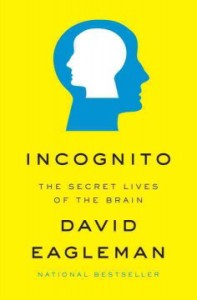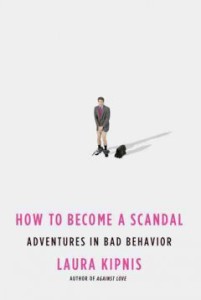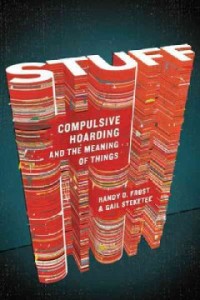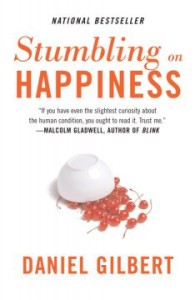The Geography of Bliss: One Grump’s Search for the Happiest Places in the World
by Eric Weiner
[Book]

view/request
Eric Weiner is a grump with a mission — trying to discover the happiest places in the world, and what makes them that way. From the World Database of Happiness in Rotterdam, Netherlands, to the Gross National Happiness of Bhutan, from binge drinking and happiness in Iceland to binge drinking and unhappiness in Moldova, Weiner travels the world and discovers some of what makes different people happy, and the many paths one can take to get there.
Reviewed by Molly
Tagged: Humor, Non-fiction, Psychology, Travel
The Professor and the Madman: a Tale of murder, insanity, and the Making of the Oxford English Dictionary
by Simon Winchester
[Book]

view/request
The creation of the Oxford English Dictionary containing 414,825 definitions was begun in 1857 and took 70 years to complete. The first edition of the OED was given to President Coolidge and is in the Calvin Coolidge Presidential Library & Museum at Forbes Library. The “Professor” is James Murray, a former schoolmaster and bank clerk, and the editor and leader of the OED project. The “madman” is Dr. W. C. Minor, a retired American Civil War surgeon who was the largest contributor with over 10,000 entries to the OED project.Minor was an extraordinary contributor but he was also a murderer, clinically insane, and incarcerated in Broadmoor, England’s asylum for criminal lunatics. Winchester tells the history of the dictionary as well as the biographies of Murray and Minor. While parts are long-winded, the story of the dictionary appeals to those who love words, books and libraries. The biography of Minor appeals to those interested in the mind, behavior and psychology. Readers who enjoy psychological fiction and are looking for a non-fiction bookmight also enjoy this.
Reviewed by Julie
Tagged: Biography, Dictionaries, Non-fiction, Psychology
Incognito : the secret lives of the brain
by David M. Eagleman
[Book]

view/request
Incognito: The Secret Lives of the Brain is a fun and informal look at the subconscious, and often surprising, workings of the human brain. Consciousness, Eagleman says, only sheds light on a tiny portion of the way our minds work. Most of what goes into our decisions, our preferences, our very thoughts, is invisible to us. The inner workings of the brain are revealed not by introspection; instead, we learn the most about our own thoughts by considering behavioral studies, the perceptions of illusions, and the revealing actions of those suffering from brain damage or cognitive disorders. From such observations we learn that the perception of motion does not require movement, that the acquisition of skills does not require conscious memory, and that certain types of logical problems are easy for us only when they are given meaning in a social context.
This book is meant to entertain. It is not the place to go if you are looking for a good understanding of the science of the human mind. But if you want an enjoyable read which provides some surprising insights into human behavior, you may enjoy Ingcognito.
Reviewed by Ben
Tagged: Non-fiction, Psychology, Science
How to Become a Scandal
by Laura Kipnis
[Book]

view/request
Who doesn’t love a scandal? In this book, Kipnis explores the how and why of scandalous behavior, including what makes the rest of us such eager consumers of other’s downfalls. She focuses on four juicy tales from the recent past at some depth , but always with a light touch: Lisa Nowak, the lovelorn astronaut; disgraced New York judge Sol Wachtler; “memoir” writer James Frey; and Linda Tripp, Monica Lewinsky’s confidant who encouraged her pursuit of President Clinton and then betrayed her. If you’ve ever wondered, “What were they thinking?” How to Become a Scandal attempts to answer that question.
Reviewed by Forbes Library Staff
Tagged: Celebrities, Non-fiction, Psychology
Nonviolent Communication
by Marshall Rosenberg
[Audiobook]

view/request
Nonviolent communication, also known as compassionate communication, is a language of empathy, respect and connection. Dr. Rosenberg developed the program based on his long experience in conflict resolution. The underlying concept is that emotions are based on needs, and that seeking to understand your own and the other’s true needs and feelings leads to peaceful interactions where everyone is more likely to get their needs met. Appropriate on any scale, it’s been helpful to me so far in personal, professional and business relationships, and Rosenberg has used it to mediate and resolve conflicts between ethnic groups and governments throughout the world. It is a truly idealistic vision of how every one of us can create a more compassionate world through learning and applying caring communication.
Also available as a
book.
Reviewed by Faith
Tagged: Communication, Non-fiction, Psychology
Stuff : Compulsive Hoarding and the Meaning of Things
by Randy O. Frost and Gail Steketee
[Book]

view/request
This is a fascinating account of how people get to the point that their living space is unlivable because of the sheer volume of possessions they can’t manage to get rid of. The authors explore case histories and the psychological and neurological reasons behind hoarding behavior. There’s a little bit of someone you know in here.
Reviewed by Faith
Tagged: Non-fiction, Psychology
Stumbling on Happiness
by Daniel Gilbert
[Book]

view/request
A humorous look at our thoughts and perceptions around happiness. Psychologist Daniel Gilbert explains why our predictions of what will make us happy are often wrong. He also examines how our memories of happy times may be distorted. This is not a self-help book, but Gilbert does help us become more realistic in our search for happiness.
Reviewed by Ben
Tagged: Non-fiction, Psychology







